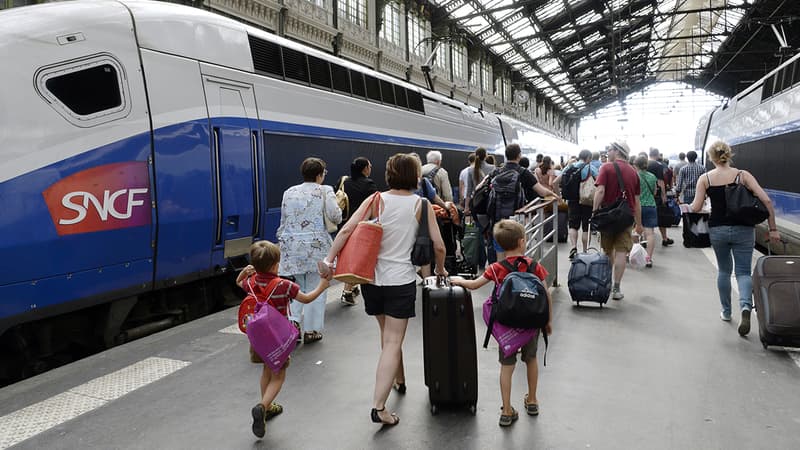Like many companies, the SNCF suffers the double penalty of inflation: on its energy cost (the operator is the largest industrial consumer of electricity) and on its other costs.
By 2023, he has already done his math: “between the explosion in energy prices (+180%) and the inflation of other concepts, our costs will increase by 13%”, Christophe Fanichet, head of SNCF Voyageurs, announced during a news conference. this Friday. If SNCF Voyageurs were to pass all the increase in these costs into its prices, the price increase should be around 13% next year.
An average 5% increase in ticket prices
Under pressure from the government to moderate increases in ticket prices and fearful that the attractiveness of the train would be diminished if prices (and therefore sales volumes) rise too much, the SNCF has tried to save itself the goat and cabbage by presenting its rate shield for next year.
The company will bear the rest of the increase. “It is a cost of several hundred million euros for the SNCF”, he continues.
These tickets and cards that won’t increase
However, the SNCF has chosen not to increase certain fares, in particular the lowest ones (ie those purchased in advance) by applying a shield to them.
“The minimum prices of TGV and TGV Ouigo will not increase, the Ouigo price tables will not increase and there will always be 1 million tickets per month for less than 25 euros. The benefits of the Avantage card (4 million customers) will be maintained”, specifies Alain Krakovitch, director of TGV/Intercités.
The prices of the Max Jeune and Senior subscriptions will remain locked at 79 euros per month, as will the price of the Avantage card at 49 euros.
These tickets that will increase much more
However, in this announcement of an average increase limited to 5%, the word to remember is “average”. Therefore, it must be understood that there will be smaller but also larger increases depending on the destinations, dates and traveler profiles, but also because the minimum fares will not increase.
Thus, a ticket to Rennes for example can vary from 16 to 90 euros. Thus, the minimum price will not change, the maximum levels will increase, but this increase may be more than 5%. Everything will depend on different filling criteria and dates, this is the famous yield management. But with 4,000 possible trips, it is difficult to give figures, explains the SNCF.
The professionals who are already the main contributors to the SNCF’s income will also have to put their hands in their pockets. Business Premiere rates or contracts between the operator and the companies will also increase by an average of 5%. For the SNCF, which is looking at all costs to win back these customers, the risk of a certain dynamic shift taking place is real. Max Active and Active+ subscriptions will also increase by 5%.
Finally, this average increase of 5% should also be applied to Intercités trains, which would mean a price increase for these trains at cheaper prices than the TGV. But the decision is up to the state. “We should have the same terms,” says Alain Krakovitch, however.
Regarding international offers, for trips made on French territory, the pricing policy will evolve in the same way as for TGVs in 2023.
Cancellation and change fees increase to 19 euros
Finally, and this is not minor, the SNCF will also make the conditions for exchanging and returning tickets less attractive. Free admission goes from D-3 to D-6 before the day of departure and the costs range from 15 to 19 euros. The new conditions will enter into force at the beginning of February 2023.
The idea is to put an end to this trend that would consist, according to the operator, of reserving several tickets on various dates and then being reimbursed, “the trains were full when they weren’t,” explains Alain Krakovitch.
This new condition will allow the SNCF time to return canceled or changed tickets to the market and optimize filling. A crucial objective for their finances: “The objective is to release the places sufficiently in advance for other clients to buy them back,” adds the manager.
“The shield will allow maintaining an average price of the TGV in 2023 similar to that of 2012”
Although the perception of the consumer is that of already significant price increases (which is questioned by the SNCF, which on the contrary believes that prices have fallen), it is not sure that the announcement of this shield is reassuring.
Another point of tension, this shield will not apply to TERs, daily trains whose prices are set by the regions after negotiations with the SNCF. In Auvergne-Rhône-Alpes, the regional council has already voted an increase of 8% from next January 1 for occasional customers and 2.8% for subscribers.
Source: BFM TV


